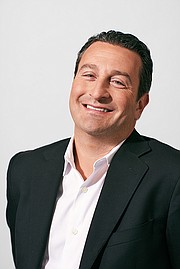FINANCE
How Apparel Companies Can Deal With a Slowing Economy
The formula for doing business is slowly changing this year. While interest rates were rising at a steady pace last year, it’s a different story this year. The Federal Reserve hasn’t raised benchmark interest rates in 2019 and may even lower them, which is good news for apparel manufacturers and retailers.
Meanwhile, the U.S. economy is expected to cool off this year and in 2020 as economies around the world slow down and a trade dispute with China is still in the works.
With this scenario, we asked financial experts this question: With U.S. interest rates remaining stable amidst a slowing economy, what financial advice do you have for apparel manufacturers when it comes to borrowing money and planning for the future?
Darrin Beer, Western Regional Manager, Commercial Services, CIT Group
Apparel manufacturers no longer have to settle for one-size-fits-all financing. A financial provider that understands the apparel industry and a manufacturer’s business operations can and should customize financing to suit the specific needs. It’s also wise to use an experienced and flexible provider that can offer a wide range of financial solutions, including working capital and factoring services, import and trade solutions, treasury management, and business real-estate loans.
Apparel manufacturers should also ensure their accounts receivable are protected. The retail landscape can be volatile as bankruptcy filings have continued into 2019.
As for planning ahead, it’s always important to make sure your business has sufficient capital to support growth and handle sales fluctuations due to seasonality, order deferments or cancellations. A properly structured financing facility should provide a company with adequate borrowing flexibility to manage through any and all of these events.
Mark Bienstock, Managing Director, Express Trade Capital
By nature, the majority of apparel producers rely on external financing to run the day-to-day operations of their company. That is what keeps factors and other lenders in business.
We always stress to our clients not to buy or produce anything without underlying orders. Speculation requires significant cash-flow strains and interest costs that most companies cannot absorb.
Whether interest rates are low or high, watching your cash flow is paramount to sustaining a profitable apparel business, both in the short and long term.
Sydnee Breuer, Executive Vice President, Rosenthal & Rosenthal
For the time being, interest rates are stable although they have increased quite a bit from a year or so ago.
There are signs of a slowing economy along with “noise” of other disrupters such as tariffs, border closings, not to mention the continued shifting of consumer preferences.
When it comes to borrowing money and planning for the future, apparel manufacturers need to be conservative in their projections and borrowings and vigilant on cost controls and inventory management.
Gino Clark, Managing Director, Originations, White Oak Commercial Finance
The decision of the U.S. Federal Reserve to hold interest rates steady amid projections of slower growth bodes well for apparel manufacturers and the retail industry.
The good news is while the economy is expected to slow down, growth is still forecasted in 2019. Continued economic development paired with interest-rate stabilization gives apparel manufacturers time to enhance their bottom-line profitability and strengthen their balance sheet. A strong balance sheet provides a solid foundation and allows companies the flexibility to adjust their business models, whether to take advantage of good times or ride out downturns.
Without a crystal ball to predict the future, it is sensible to prepare for any market fluctuations.
Joshua Goodhart, Executive Vice President and National Sales Manager, Merchant Financial Group
With the U.S. economy slowing and interest rates remaining stable for the time being, we believe manufacturers are entering an uncertain and dangerous time for the apparel business but one that is ripe with opportunity for those who pursue measured and strategic growth with the right financing partners.
Our advice to clients and prospects continues to be to keep borrowing levels at a minimum and to keep overhead tight. The key right now is to maintain profitability in this troubled market. It is important to be ahead of the game and manage expenses effectively, especially interest expense.
We urge manufacturers to work closely with their lenders and accountants to come up with plans that will work. Borrowing money is still very much an affordable option for growth. Merchant has found that manufacturers who do not work closely with their team of professionals are more challenged to achieve success during times of uncertainty.
We also encourage clients to look for new ways to make money. For some, that may be to expand with a direct-to-consumer platform where margins are more attractive, and for others it may be to target creditworthy online retailers.
The online retail market is expanding, and we encourage manufacturers to develop new retail relationships. The key for all manufacturers is to manage this process in a measured and cost-effective manner to avoid burning through cash and capital.
Rob Greenspan, President and Chief Executive, Greenspan Consult
Borrowers have become accustomed to low interest rates over the past decade or so. New startup companies have not seen the years with high, soaring interest rates.
While interest rates are stable for now, no one can predict what the future will bring. When the economy slows down, apparel manufacturers need to keep their attention focused on assets that turn into cash such as accounts receivable and inventories.
Having large investments in these assets that are not turning into cash fast enough will cause the companies to borrow more money. Not only do their interest costs increase, but they could reach their borrowing limits, which could become problematic.
Apparel manufacturers, during times of a slowing economy, need to maintain their liquidity. Companies need to keep a focus on cash flow and profitability.
By reviewing their operating expenses and updating their sales projections and cash-flow plans, they can be ahead of the curve if changes need to be made.
Sunnie Kim, President and Chief Executive, Hana Financial Inc.
Historically, rates remain modestly low. This is only the second pause in rate hikes in the last 10 quarters, which is a welcome relief for many apparel manufacturers looking to borrow money for expansion.
However, companies need to maintain a cautious approach as Federal Reserve Chairman Jerome Powell’s stance can best be described as one of wait and see. There are many unknowns that can jeopardize the current stability we enjoy, such as the upcoming 2020 election, overall relations with Mexico and the China factor on a macro level. There are also the ever-changing dynamics currently being experienced in both the wholesale and retail distribution channels on a micro level.
Regardless of the economic cycle, planning for future needs should always be disciplined and based on specific market-sector needs with a combination of cash reserves, needed additions to debt earmarked to support specific business-cycle (working-capital) needs and fixed-asset additions.
Robert Meyers, President, Republic Business Credit
At this point of the economic cycle, we advise our apparel manufacturers to retain their earnings to provide more cushion for unexpected future events.
We recommend clients extend their current financing agreements to take advantage of the present interest-rate environment. While you can’t plan for all future events, the combination of a supportive partner and retained capital will better prepare your company to thrive in the future.
Dave Reza, Senior Vice President, Western Region, Milberg Factors
With the economy slowing and retail continuing its woes, we would advise clients and prospects to “pump the brakes” on speculative and or excess inventory purchases and stay focused on cost control.
By managing their assets appropriately in relation to the scale of actual order activity, they will improve liquidity and reduce borrowing requirements.
Lower levels of debt are beneficial in any environment but are particularly important in a slowing economy. Further, the continuing financial problems of several well-known retailers cannot be understated.
Kevin Sullivan, Executive Vice President, Western Region Manager, Wells Fargo Capital Finance
As we continue to see major shifts within the retail landscape and around how consumers purchase products in general, it’s important for apparel companies to make sure they have a financing structure in place that creates breathing room in the event that a company experiences a difficult quarter or two.
The industry has become a more capital-intensive endeavor over the last few years with manufacturers and importers sometimes having to carry more inventory than they’d prefer. Large licensors sometimes are seeking larger licensing fees upfront, and direct-to-consumer strategies are requiring larger expenditures, whether in the form of IT or customer-acquisition costs.
The net impact of these changes is that companies generally need more equity in conjunction with a lender who understands both the changes in the industry and seasonal needs that might be higher than they’ve historically been.
If a company is showing solid growth while experiencing some of these other challenges, it sometimes makes sense to bring in an equity partner to help take the company to the next level. Once a management team decides to pursue that strategy, it’s always helpful to engage an investment-banking partner who understands the apparel industry.
Once the right capital structure is in place, companies need to stay highly focused on which expenditures are vital and which ones don’t really add a tremendous amount of value.
We’ve recently seen a number of companies within the industry hit with ransomware attacks, for instance. Investing in increased security around a company’s IT infrastructure is never a bad idea, particularly at a time when these attacks have cost companies significant dollars in lost sales. We like to advise our clients to always maintain both a 12-month cash-flow projection and a 13-week cash-flow projection so that management can quickly ascertain what the true borrowing needs of the company will be in the short and long term.
Ken Wengrod, Co-founder/President, FTC Commercial Corp.
First and foremost, apparel manufacturers should not be focusing on interest-rate fluctuations. It is out of their control. Historically, when the interest rates are low, we typically see private-equity firms highly leveraging good companies with cheap money, and as a result these companies struggle to push sales just to maintain their liquidity. Instead, the focus should be on what manufacturers can do best—create and ship merchandise that customers demand. It is a manufacturer’s job to create merchandise that exceeds their consumers’ expectations in terms of authenticity, integrity and value.
When that is established, then they can examine all areas of their supply chain to minimize their costs. In addition, there are numerous avenues of costs that go unchecked by manufacturers. They can be negotiating better terms with all their suppliers, including their banking and factoring costs. The ultimate goal for manufacturers is to negotiate extended open-supplier terms to match their trade cycle and only borrow to support growth and not for building excessive inventory levels in case they get a future order.
































